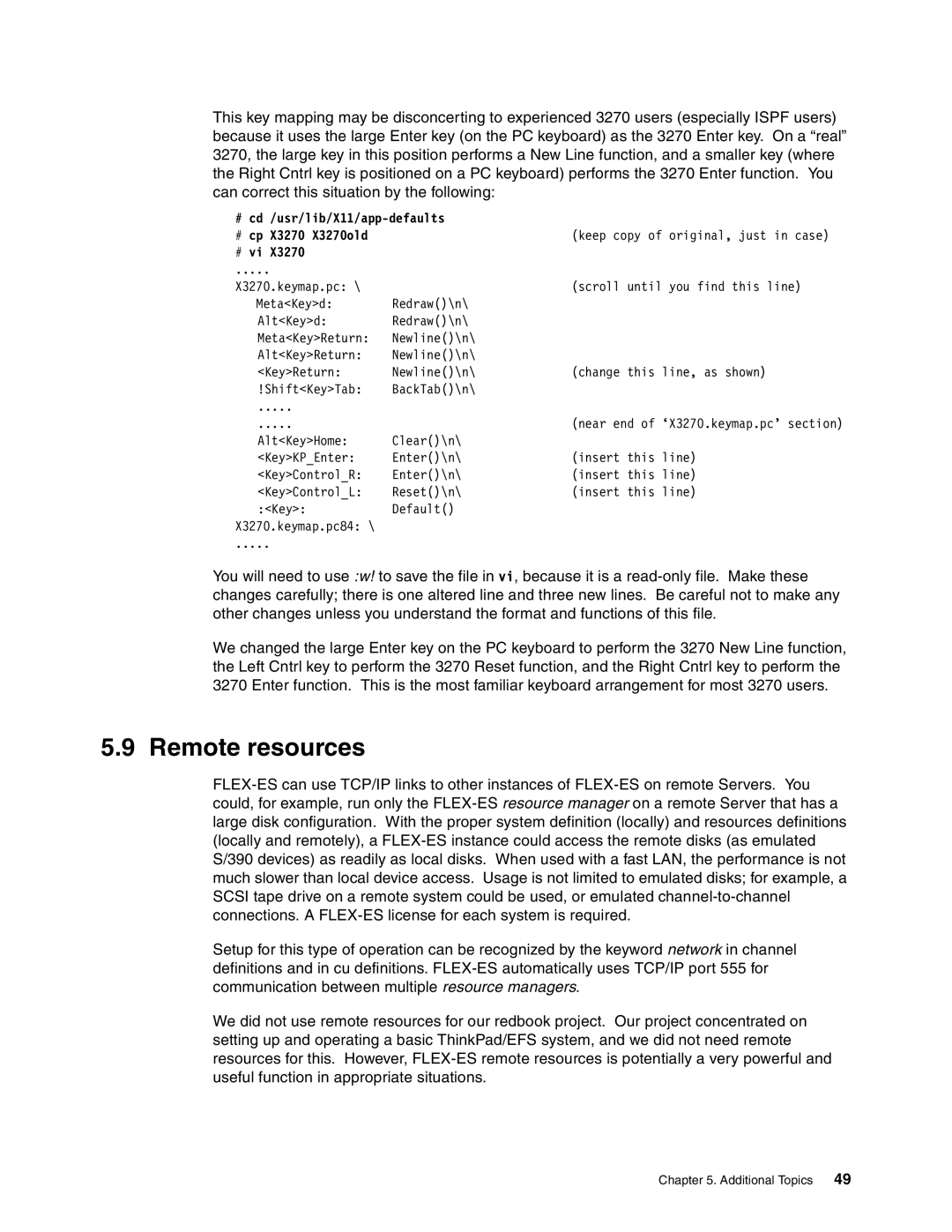This key mapping may be disconcerting to experienced 3270 users (especially ISPF users) because it uses the large Enter key (on the PC keyboard) as the 3270 Enter key. On a “real” 3270, the large key in this position performs a New Line function, and a smaller key (where the Right Cntrl key is positioned on a PC keyboard) performs the 3270 Enter function. You can correct this situation by the following:
# cd /usr/lib/X11/app-defaults
# cp X3270 X3270old |
| (keep copy of original, just in case) |
# vi X3270 |
|
|
..... |
|
|
X3270.keymap.pc: \ |
| (scroll until you find this line) |
Meta<Key>d: | Redraw()\n\ |
|
Alt<Key>d: | Redraw()\n\ |
|
Meta<Key>Return: | Newline()\n\ |
|
Alt<Key>Return: | Newline()\n\ |
|
<Key>Return: | Newline()\n\ | (change this line, as shown) |
!Shift<Key>Tab: | BackTab()\n\ |
|
..... |
|
|
..... |
| (near end of ‘X3270.keymap.pc’ section) |
Alt<Key>Home: | Clear()\n\ |
|
<Key>KP_Enter: | Enter()\n\ | (insert this line) |
<Key>Control_R: | Enter()\n\ | (insert this line) |
<Key>Control_L: | Reset()\n\ | (insert this line) |
:<Key>: | Default() |
|
X3270.keymap.pc84: \ |
|
|
..... |
|
|
You will need to use :w! to save the file in vi, because it is a
We changed the large Enter key on the PC keyboard to perform the 3270 New Line function, the Left Cntrl key to perform the 3270 Reset function, and the Right Cntrl key to perform the 3270 Enter function. This is the most familiar keyboard arrangement for most 3270 users.
5.9 Remote resources
Setup for this type of operation can be recognized by the keyword network in channel definitions and in cu definitions.
We did not use remote resources for our redbook project. Our project concentrated on setting up and operating a basic ThinkPad/EFS system, and we did not need remote resources for this. However,
Chapter 5. Additional Topics | 49 |
